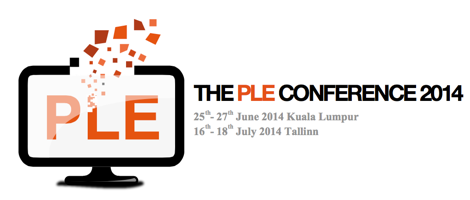Learning Analytics for Workplace and Professional Learning
Whilst there has been much interest from the Technology Enhanced Learning research and development community in Learning Analytics (LA) , most of the focus has been on formal learning in educational institutions. There has been relatively little written about work based learning and continuing professional development, let alone informal learning. And what evidence there is suggests that Learning Analytics applied to informal and work based learning may require a significantly different approach to the emerging mainstream LA for schools and universities. Amongst other issues, data sets may be significantly smaller, learners are less concerned about completing learning in a set time to well defined assessment metrics and may have significant concerns about data privacy. Perhaps most significantly the answers we are trying to find out about learning in the workplace may not be the same as within an educational institution.
For this reason it is very good to see the organisation of a Learning Analytics for Workplace and Professional Learning (LA for Work) workshop collocated with the
Learning Analytics and Knowledge Conference (LAK 2016) at University of Edinburgh, Edinburgh, UK, being held in April 2016. Below is the Call for Papers.
Learning Analytics have been striving in the past years for all types of educational settings. However, analytics for workplace learning has been much less in the focus of the learning analytics community. While Learning Analytics in educational settings very often follow a particular pedagogical design, workplace learning is much more driven
by demands of work tasks or intrinsic interests of the learner, by self-directed exploration and social exchange that is tightly connected to processes and the places of work. Hence, learning interactions at the workplace are to a large extent informal and not embedded into a pedagogical scenario. At the same time, workplace learners can benefit from being exposed to their own and other’s learning processes and outcomes as this potentially allows for better awareness and tracing of learning, sharing experiences, and scaling
informal learning practices.
Recently, several different approaches to Learning Analytics in the workplace have been suggested. Some of these have been coming from the tradition of adaptive learning systems or self-directed learning environments for workplace learning or lifelong learning, some from learning in professional communities. Recently, the topic of
performance analytics or analytics in smart industries has extended the focus to more traditional work settings. New research challenges also abound in workplace scenarios, such as the introduction of new technologies (augmented interfaces, large scale collaboration platforms), or the new challenges that derive from the need to make
informal learning processes better traceable and recognizable.
We consider that workplace learning scenarios can benefit from existing research in education-based Learning Analytics approaches and technologies. At the same time, we are convinced that the community would benefit from a closer exchange around the specificities of workplace learning, such as the unconstrained and less plannable
learning processes, the challenge to integrate learning systems in work practices, or a methodological focus on design-oriented research approaches with smaller samples in real life settings. At the same time, we think that researchers in the educational domain can benefit from this workshop at LAK, as the clear boundaries between formal and
informal learning are increasingly vanishing, and a focus on lifelong learning is increasingly being established. For this reason, the LA for Work workshop aims at providing a forum for researchers and practitioners who are making innovative use of analytics at the workplace, and for those who have an interest in exploring analytics
in more informal learning settings.
Objectives and Topics
The objective of this workshop is to provide a forum for researchers in the area of learning analytics who specifically address learning at the workplace or in professional settings in different forms and flavors. We will welcome high-quality papers about actual trends related to workplace Learning Analytics. We will seek application oriented, as well as more theoretical papers and position papers in the following, non-exhaustive list of topics:
Learning Analytics for informal learning
Learning Analytics for the integration of formal and informal learning
Learning Analytics for workplace performance
Learning Analytics for lifelong learning
Community-Based Learning Analytics
Learning Analytics for Organisational Learning
Learning Analytics in professional communities
Workplace learning awareness, measurement and certification
Analytics for different educational processes at or near the
workplace, such as problem-based learning, on-the-job training,
self-directed informal learning, collaborative learning
Knowledge maturing in communities of practice, organisations or networks
Data-driven interventions to improve learning processes at the workplace
Recomendations of learning artifacts or learning activities at the workplace
DATES & SUBMISSION
We welcome the following types of contributions:
Short research papers and position papers (up to 4 pages)
Full research papers (up to 6 pages)
All submissions must be written in English and must be formatted according to the ACM format. Please, submit your contributions electronically in PDF format via
https://easychair.org/conferences/?conf=laforwork2016


